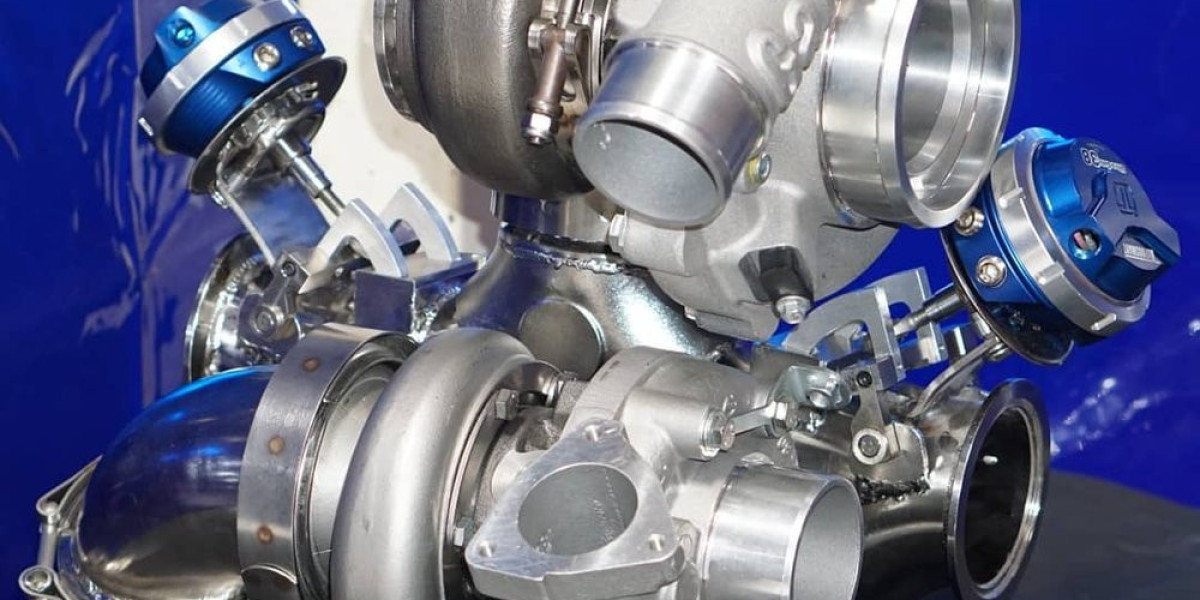Selecting the right turbocharger pairing is a crucial step in optimizing your engine's performance with the Hlava Sequential-Turbo Manifold. To make an informed choice, you should consider several key factors:
Engine Size: The size and displacement of your engine play a significant role in determining the ideal turbo pairing. Smaller engines may benefit from smaller primary turbos, while larger engines can handle more substantial turbochargers.
Power Goals: Define your power goals. Are you seeking high-end performance, low-end torque, or a balance of both? Your objectives will guide your turbocharger selection.
Performance Characteristics: Consider the specific performance characteristics you desire. Do you want quick acceleration, reduced turbo lag, or maximum top-end power? Each turbocharger has its strengths and weaknesses.
Turbocharger Efficiency: Evaluate the efficiency of the turbochargers you're considering. A more efficient turbocharger will generate less heat and provide better power delivery.
Exhaust Flow and Manifold Design: Take into account the Hlava Sequential-Turbo Manifold's design and its ability to optimize exhaust gas usage. This design allows for a unique approach to turbocharger pairing.
Recommendations Based on Engine Size, Power Goals, and Performance Characteristics
The manifold's flexibility and ability to switch between turbochargers make it a versatile option for different engine setups. Here are some general recommendations based on different scenarios:
High-Performance Setup: If you're aiming for maximum power, pairing a small primary turbocharger with a larger secondary turbocharger can provide the best of both worlds. The small turbo offers quick response, while the larger turbo delivers top-end power.
Balanced Performance: For a balance of low-end torque and high-end power, consider pairing similar-sized turbos. This approach maintains a smooth power curve throughout the RPM range.
Quick Acceleration: If quick acceleration is your primary goal, focus on a turbo pairing that minimizes turbo lag. This might involve selecting a smaller primary turbocharger that spools up rapidly.
Case Studies of Successful Turbocharger Pairings with the Manifold
Real-world examples demonstrate the manifold's capabilities in action. Here are a few case studies showcasing successful turbocharger pairings:
Case Study 1: High-Performance Sports Car
Pairing a small-frame primary turbo with a high-flow secondary turbo resulted in rapid acceleration and impressive top-end power. This setup allowed the sports car to achieve remarkable performance on the track.
Case Study 2: Balanced Performance Sedan
A sedan seeking a balance between daily drivability and spirited performance benefited from a similar-sized turbo pairing. The manifold's design ensured consistent power delivery across various driving conditions.
Case Study 3: Quick-Response Hot Hatch
A hot hatchback achieved quick turbo response by combining a small primary turbo with a specially matched secondary turbocharger. The result was a pocket rocket that excelled in city driving and on winding roads.
User Reviews and Feedback on Different Turbocharger Combinations
Users who have installed the Hlava Sequential-Turbo Manifold and experimented with various turbocharger pairings have provided valuable feedback. Their experiences can offer insights and guidance for those considering similar setups. Reading user reviews and engaging in discussions within the enthusiast community can help you make an informed decision about the best turbo pairing for your specific needs.
In conclusion, choosing the right turbocharger pairing with the Hlava Sequential-Turbo Manifold is a pivotal step in unlocking instantaneous turbo response and optimizing your engine's performance. By carefully considering factors like engine size, power goals, and performance characteristics, and drawing inspiration from successful case studies and user feedback, you can tailor your setup to achieve the desired balance of power and efficiency.



